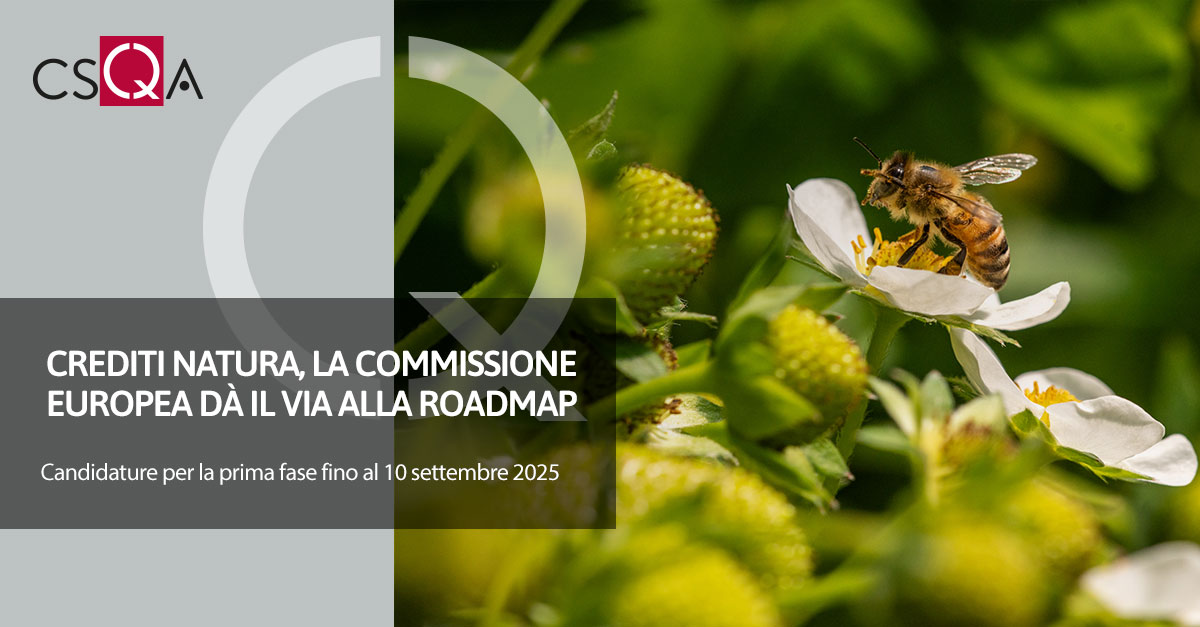 With the official launch of the Roadmap towards nature credits , the European Commission takes an important step towards integrating biodiversity protection into economic and financial logic.
With the official launch of the Roadmap towards nature credits , the European Commission takes an important step towards integrating biodiversity protection into economic and financial logic.The initiative aims to promote private investment in concrete actions in favor of nature – such as the restoration of wetlands, forestation or the creation of habitats for pollinators – through the generation of “nature credits”: certified units that attest to the ecological benefit of a given intervention and that can be purchased by companies, public bodies or citizens.
This measure is part of a broader European effort to combat environmental degradation and climate change , while providing economic opportunities to communities that live and work in close contact with ecosystems.
What are nature credits?
As clarified in the FAQ published together with the Commission press release, nature credits represent a voluntary investment in positive environmental actions, supported by an independent certification system.Investors – whether companies, financial institutions, government agencies or citizens – can derive tangible benefits such as reduced environmental risks, improved corporate reputation, increased social acceptability of their projects and, in some cases, reduced operating costs.
For example , a group of farmers working together to restore a natural area could obtain certification from an accredited body.
The results of this intervention, verified and quantified, will be able to generate nature credits that can be sold on the market to subjects interested in supporting biodiversity or achieving their sustainability objectives.
An opportunity for the primary sector and for the territories
One of the most relevant aspects of the Roadmap is the direct involvement of actors such as farmers, foresters, fishermen, landowners and local communities.For these individuals, nature credits represent not only an additional source of income, but also a tool to strengthen the resilience of their economic activities .
Interventions such as hedgerow maintenance, pasture management or soil biodiversity improvement can generate environmental benefits and at the same time reduce production costs, improve soil fertility, enhance pollination and increase water availability.
The Commission stresses that the mechanism is voluntary and will not imply additional mandatory burdens , but on the contrary will be structured in such a way as to simplify certification thanks to the use of digital tools and the definition of clear and shared standards.
A $180 Billion Emerging Market
Although nature credit markets are still in their infancy, global demand is expected to reach $180 billion in the coming years .The Union's aim is to capture a significant part of this demand to help close the current annual funding gap for biodiversity, estimated at around €37 billion.
To this end, the Commission intends to proceed in a gradual but structured manner, promoting pilot projects and establishing a group of experts who will develop the certification methodologies and governance rules of the system.
The call to participate is open to all interested actors – from businesses to civil society – and applications for the first phase can be submitted until 10 September 2025.
Differences from carbon credits and the role of certification
It is important to note that nature credits do not overlap with carbon credits.While the latter are focused on reducing or offsetting CO₂ emissions, nature credits have as their main objective the protection and restoration of biodiversity and ecosystems .
The two instruments can, however, be complementary , especially in cases where environmental projects generate benefits both in terms of carbon absorption and ecological terms.
Another central element of the Roadmap is the certification-credits combination.
Certification attests to compliance with certain environmental standards , while credits represent the tradable and monetizable output of those actions, guaranteeing transparency and credibility to the entire process. (Source: https://www.ruminantia.it/ )